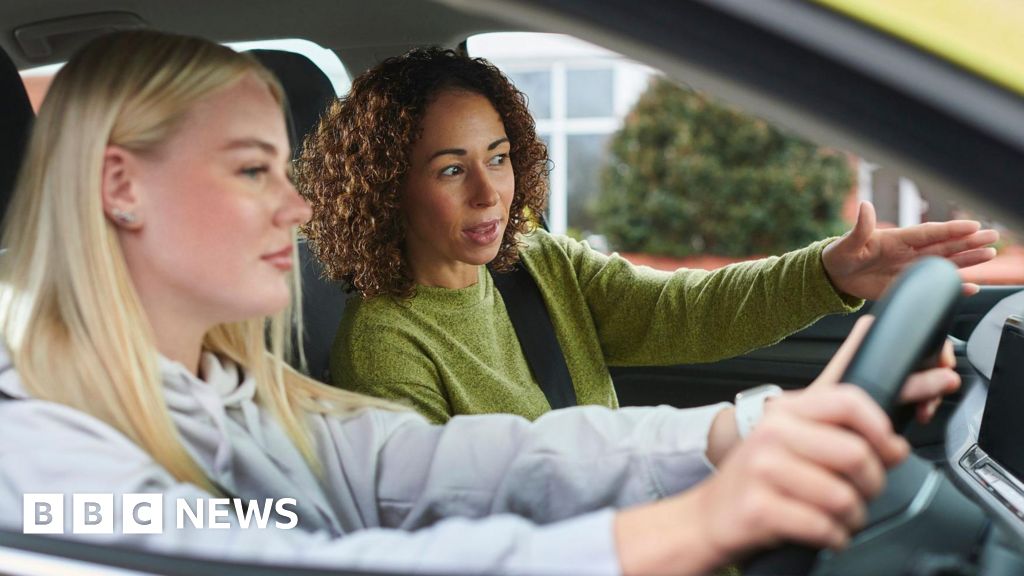‘Car Brain’ is killing us—literally

May is Mental Health Awareness Month. That means campaigns about anxiety, burnout, depression, and trauma will pop up in schools, offices, billboards, and magazines across the country. But few of those campaigns will mention a force that fuels all of those conditions—a force so normalized, it hides in plain sight. That force is Car Brain.
Car Brain is an affliction that causes people to justify or ignore antisocial behavior that involves an automobile. It’s when someone who respects others in nearly every context suddenly becomes selfish, reckless, or even hostile just because a car has become part of the interaction. Once you start looking, you’ll see it everywhere, online and IRL.
Car Brain is a dangerous but normalized condition that needs a spotlight during Mental Health Awareness Month. It’s a kind of cultural psychosis. It’s why someone who would never shove an elderly person out of the way has no problem speeding past a crosswalk while an elderly person inches across the street.
Car Brain is why so many Americans experience a constant state of low-grade anxiety, sensory overload, and chronic stress—without realizing it’s rooted in something deeper than work or home life. It’s rooted in their daily environment, which has been designed around machine speed instead of human need.
Every day, more than 100 Americans are killed in traffic crashes. Far more survive with catastrophic injuries—amputations, traumatic brain injuries, permanent disability. These aren’t all “accidents.” A high-speed collision on a downtown street that changes a group of people’s lives forever isn’t an oopsies. Most severe crashes are the logical result of antisocial choices baked into a car-first culture:
● Speeding through school zones because you’re late for work.
● Running red lights because “it was barely red.”
● Parking in a bike lane because “they can just go around.”
● Failing to yield at crosswalks because “didn’t I already tell you, I’m late for work!”
These common and seemingly minor decisions have enormous consequences. What starts as personal entitlement often ends in someone else’s hospital stay—or funeral.
The emotional weight of a car-centric world
Mental health experts know that your surroundings shape your mood and behavior. Environments that are loud, fast, and disconnected from human interaction put us into a constant state of alert. What’s the dominant environment in most American communities? Roads that prioritize automobile travel and an ever-present sense that one wrong move could be deadly.
Children can’t safely bike to school, so they get chauffeured instead—losing both independence and physical activity. Seniors become prisoners in their own homes if they can no longer drive. People in poverty are forced to spend thousands of dollars they don’t have just to participate in society. And all of us find ourselves stuck inside vehicles that make us more anxious, more aggressive, and more isolated. The dependence on personal vehicles leads to thinking of them as an extension of ourselves, or at least a vital part of our lives. So any perceived inconvenience ignites Car Brain, causing us to commit or justify behavior we’d otherwise condemn.
In any other context, these antisocial behaviors would be signs of a serious problem:
● Yelling at someone who walked slower than you in the grocery store.
● Swinging nunchucks at a crowded playground.
● Storing your spare fridge on a public sidewalk.
But do all of that with a car? And suddenly it’s just “the price of modern life.” That’s the power of Car Brain: it’s so culturally embedded that it looks rational.
Speeding, running red lights, tailgating, parking in bike lanes, parking in bus lanes, parking on sidewalks, blaming dead pedestrians for not being dressed like Christmas trees—these are all harmful cultural norms that need to be shamed and met with severe consequences.
There’s an unspoken belief that driving is natural, necessary, and morally superior. It’s why cities spend millions expanding roads while underfunding buses. It’s why “congestion” is treated as a crisis, but 40,000 annual road deaths are met with a shrug. The most dangerous part of Car Brain is that we don’t see it for what it is—a mass delusion that enables harm, excludes millions, and degrades mental and physical well-being.
The path to wellness
Mental Health Awareness Month shouldn’t just be about personal coping strategies and mindfulness reminders. It should include a reckoning with the systems that make us sick in the first place.
The alternative is to design neighborhoods where walking, cycling, and taking transit aren’t signs of poverty or punishment, but signs of liberation. That requires us to stop treating streets as high-speed pipelines for cars and start treating them as places of connection—places for living, meeting, playing, and being human.
Be ready to confront your own Car Brain, which whispers that anything slowing down a driver must be wrong—even if that “wrong” thing is a child trying to cross the street. Admitting what we’re capable of will make it easier to stop excusing antisocial, dangerous behavior just because it happens to involve a motor vehicle. The first step in healing is recognizing we’re all breathing the same polluted cultural air.
What's Your Reaction?
 Like
0
Like
0
 Dislike
0
Dislike
0
 Love
0
Love
0
 Funny
0
Funny
0
 Angry
0
Angry
0
 Sad
0
Sad
0
 Wow
0
Wow
0





























































































